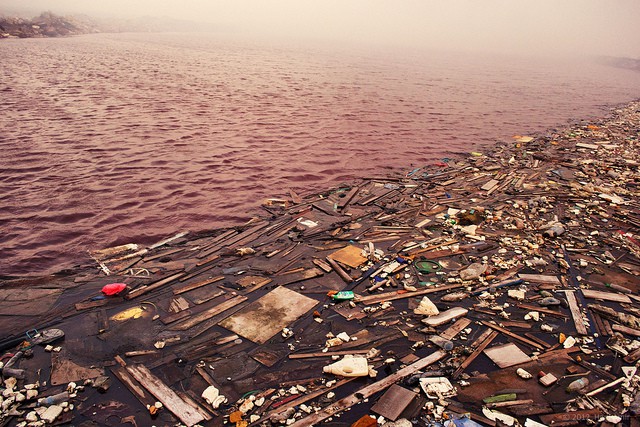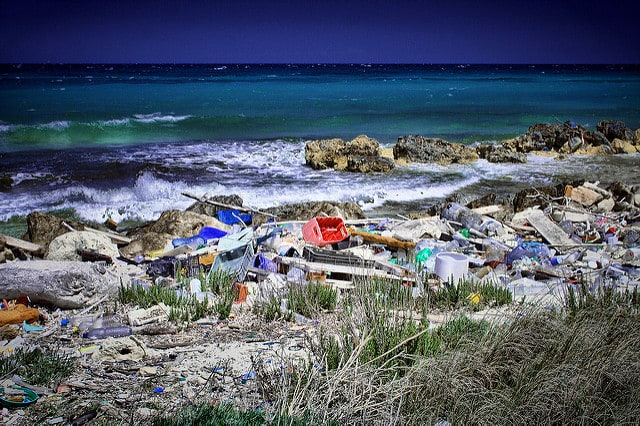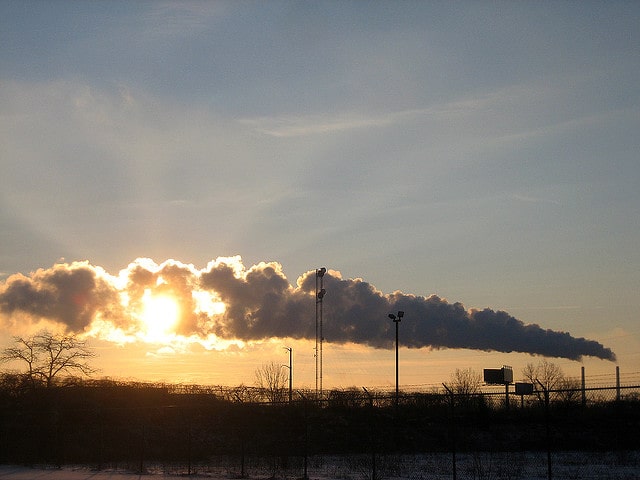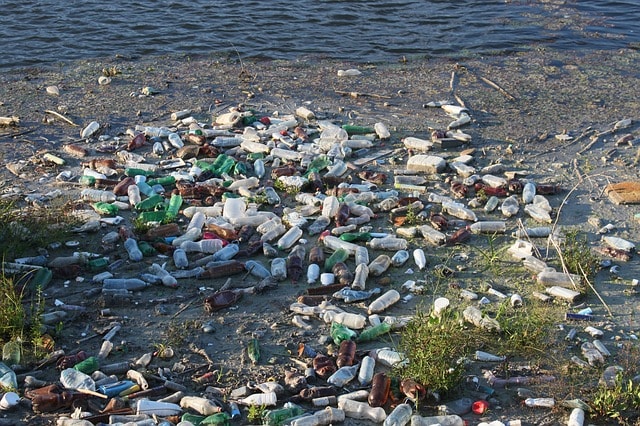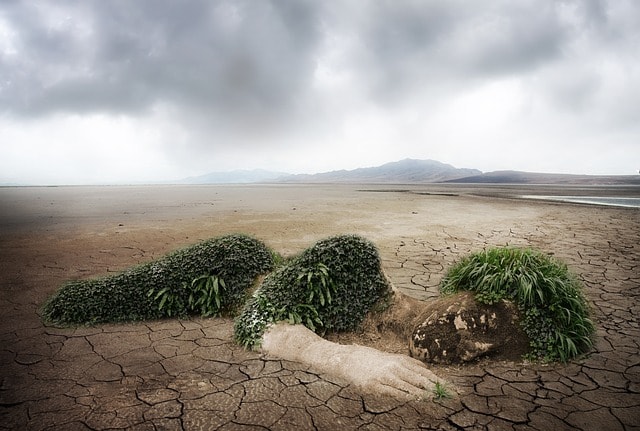Do Nuclear Power Plants Cause Pollution?
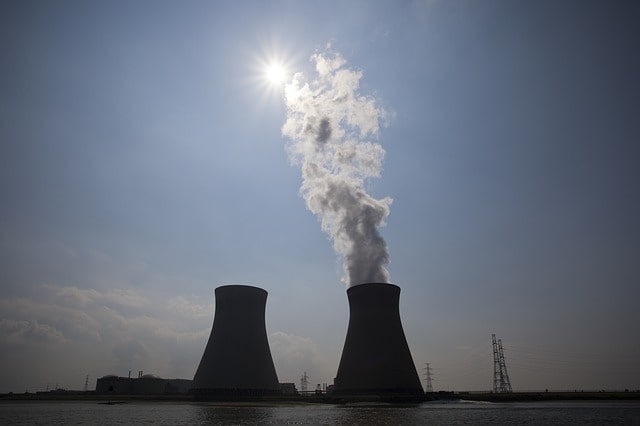
Nuclear energy is one of the most efficient and clean forms of energy. It releases a very less amount of carbon dioxide as compared to other sources of energy. The nuclear power plant is a thermal power station in which water is heated to produce steam. A nuclear power plant consists of different buildings which include turbine building, pressurized reaction chamber, cooling chamber, and so on.
The turbine building consists of many turbines as well as the generator necessary for electrical power generation. The nuclear reactor is in the containment building which is made up of reinforced concrete. The reinforced concrete used in the containment building is 1 meter thick that prevents radiation to leak. There is a cooling tower in the nuclear power plant where hot water is cooled and sent back to the containment building.
The steam produced is used to rotate a turbine to produce electrical energy. Heat is produced by nuclear fission in which atoms split to release thermal energy. This reaction takes place in a pressurized reactor vessel. The pressurized reactor vessel houses hundreds of fuel assemblies.
A single fuel assembly is composed of many fuel rods. The nuclear fuel is contained in the fuel rod. These fuel rods are composed of uranium or other heavy elements that make the nuclear chain reaction possible. Thermal energy is released in the fission chain reaction.
At this stage, the water is needed to absorb thermal energy released from the chain reaction. This water does not boil as the pressure is maintained by the pressurizer. The heated water travels to a heat exchanger where it heats the pipes of the heat exchanger which has water.
This water begins to boil and eventually converts to steam. The steam produced is fed into the turbine building with the help of pipes. After this stage, the steam is converted back into the water using a condenser. It is then returned to the heat exchanger and reused. However, the water used for cooling in the condenser is taken from nearby natural water bodies and is not reused.
Do Nuclear Power Plants Cause Pollution?
Nuclear power plants use uranium as a fuel to produce thermal energy. The mining process of uranium releases carbon dioxide that causes pollution. Therefore, setting up new nuclear power plants releases carbon dioxide into the atmosphere. Nuclear power plants produce at least three types of waste streams that have adverse effects on the environment. The three waste streams are:
- Spent nuclear fuel which includes fission products and plutonium waste.
- Tailings and waste rock at uranium mining mills.
- Releases of ill-defined quantities of radioactive materials during accidents.
Apart from the production of waste, water pollution is the main problem associated with nuclear power. Also, the operation of nuclear power plants does not cause any air pollution and due to this reason, it is considered one of the cleanest sources of energy.
Do Nuclear Power Plants Cause Radiation?
The nuclear material is one of the most poisonous substances on earth. However, most of the radiation of an operating plant is blocked by its structure or is dissipated into the water source. This reduces the amount of radioactivity to a point that it is difficult to measure.
However, many accidents have taken place where nuclear power plants have leaked a significant amount of radiation. An operating nuclear power plant exhausts gases that are radioactive to some extent.
Furthermore, boiling water reactors in plants have air ejectors whose exhaust is also radioactive. Such exhausts are made to pass through delay pipes, hydrogen recombines, and storage tanks before they are released into the atmosphere to ensure that radiation levels are in accordance with the regulations.
Nuclear fuel like uranium can be used for a specific amount of time. After this, it is considered a waste and needs to be isolated due to the emission of radiation. Most of this is stored in water which shields the environment from the radiation.
However, if any system in the nuclear power plant fails, nuclear waste releases radiation which is harmful to the environment. This radioactive waste is a huge concern as it remains active for hundreds and thousands of years.
How do Nuclear Power Plants Affect the Environment?
The setting up of nuclear power plants requires a large area. Therefore, forests are cleared and this disturbs the natural habitat of flora and fauna. The ecological balance in the area is also disturbed.
Also, nuclear power plants need water for cooling purposes. First of all, the cooling system obtains water from the oceans and seas which pulls fish along with it. This intake of fish kills them.
Secondly, after the cooling procedure is done the water is returned to the water bodies. The water that is returned is at least 25 degrees warmer than the water that was taken originally. This harms the different aquatic plants and animals.
The functioning of nuclear power plants also releases sulfur dioxide that causes air pollution. This causes acid rain which reduces the productivity of soil, contaminates water bodies, and affects vegetation.
Do Nuclear Power Plants Pollute Water?
Two different water streams are used in nuclear power plant process that is:
- Process water
- Cooling water
Process water travels to the reaction chamber where it is heated and vaporized to steam. This steam is then passed over the turbines that start rotating and produce electrical energy. This steam is reused, condensed, and sent back to the reaction chamber.
The cooling water travels from the natural water bodies to cool the process water. Cooling water is not reused and it is sent back to water bodies. The water sent back has a higher temperature and it affects the ecosystem of the water bodies.
The rise in temperature of water bodies depletes the oxygen levels in water and increases pH. This is because warm water cannot hold oxygen like cold water. In warmer temperatures, organic matter decomposes at a rapid rate. This increase in decomposed matter leads to the growth of algal blooms that leads to eutrophication.
Algae is a food source for aerobic microbes that increase in population and decrease the oxygen levels. Many organisms cannot survive in low oxygen levels and eventually die. In addition to this, warm water increases the metabolism of cold-blooded marine animals like fish. This causes malnutrition due to the limited amount of food available.
Do Nuclear Power Plants Pollute the Air?
Nuclear power is one of the cleanest forms of energy as it does not cause air pollution while operating. However, while mining and refining uranium ore, fossil fuels are used which when burnt emit gases into the atmosphere.
Nuclear energy causes the least pollution as compared to other energy sources. It can help reduce air pollution-related health problems in humans as well as animals.
Is it Safe to Live Near a Nuclear Power Plant?
There has been a growing concern about the safety of living near nuclear power plants. Living near a nuclear power plant does not pose a risk and according to experts, it is safe to live near a nuclear power plant.
However, the only problem with nuclear power plants is the accidents linked to it which are extremely rare. A nuclear accident poses mainly two health threats which are:
- Direct radiation
- Ingestion
Direct radiation spreads away from the source at a quick pace. Ingestion poses a greater health risk for the people living around. Radioactive isotopes become airborne after an explosion and ingestion of these isotopes can lead to thyroid cancer or other different cancers.

